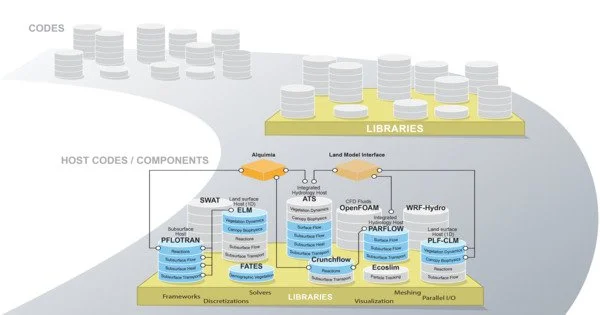A software ecosystem is a collection of interconnected software applications, services, tools, and platforms that collaborate to deliver a complete solution for end users or developers. “Software Ecosystem” is a book written by David G. Messerschmitt and Clemens Szyperski that explains the essence and effects of a “software ecosystem,” which is defined as a group of businesses that operate as a unit and interact with a shared market for software and services, as well as their relationships.
These partnerships are frequently supported by a shared technology platform and involve the interchange of information, resources, and artifacts. This interconnection enables smooth integration and collaboration among various software components, resulting in a more efficient and productive environment.
Key components of a software ecosystem include:
- Applications: These are the end-user-facing programs or software that perform specific tasks or functions. Examples include word processors, web browsers, accounting software, etc.
- Development Tools: Software ecosystems often include a variety of tools for developers to create, debug, test, and deploy applications. Examples include integrated development environments (IDEs), version control systems, and debugging tools.
- Frameworks: Frameworks provide a foundation and structure for developing applications. They often include pre-built components, libraries, and conventions that make it easier for developers to build upon and extend functionalities.
- Middleware: Middleware acts as a bridge between different software applications and facilitates communication and data exchange. Examples include message queues, application servers, and data integration tools.
- Operating Systems: The operating system (OS) is a fundamental part of the software ecosystem, providing a platform for other software components to run. Examples include Windows, Linux, macOS, and various mobile operating systems.
- Databases: Databases are crucial for storing and managing data. Software ecosystems often include various types of databases, such as relational databases, NoSQL databases, and in-memory databases.
- Cloud Services: With the rise of cloud computing, many software ecosystems include cloud services that provide scalable and flexible computing resources, storage, and other services over the internet.
The term in software analysis
Lungu defines a software ecosystem as “a collection of software projects, which are developed and co-evolved in the same environment” in the context of software analysis. The environment can be either organizational (a firm), social (an open-source community), or technical (the Ruby ecosystem). The ecosystem metaphor refers to an analysis that includes numerous software systems. The most common type of analysis is static analysis of the source code for the ecosystem’s component systems.
Examples of software ecosystems include the Microsoft ecosystem (Windows OS, Office Suite, Azure cloud services), the Java ecosystem (Java programming language, JVM, various frameworks), and the mobile app ecosystem (iOS and Android operating systems, app stores, development tools).
The success of a software ecosystem often depends on factors such as interoperability, developer support, user experience, and adaptability to changing technologies and market demands.
















